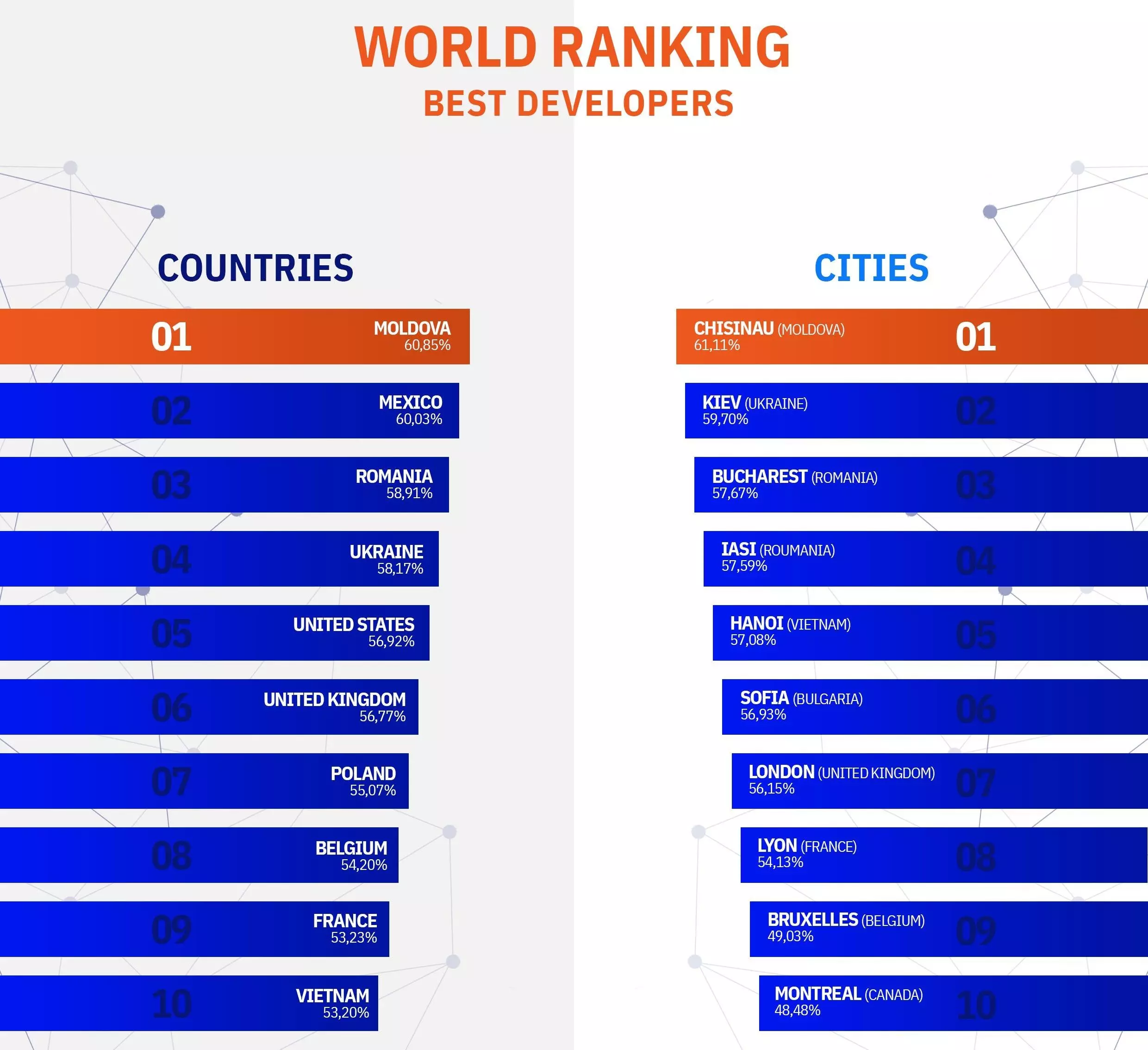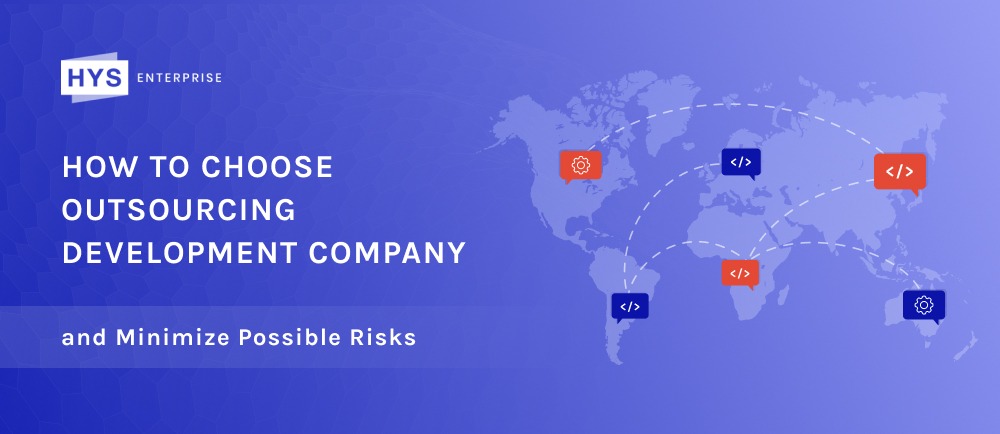The outsourcing industry has become global, and more and more companies are resorting to outsourcing. Besides, outsourcing has turned into a successful cost-cutting tool not only for startups but also for such top companies as GitHub, Slack, and Alibaba.
If the idea of potential outsourcing seems superb to you, do not rush into decisions. There are thousands of outsourcing companies in the world that offer their services at different prices and under different conditions. Before choosing a vendor, determine your goals and research the market to minimize risks.
Let’s delve into the key steps to help you find the right outsourcing development company.
1. Determination of Your Requirements, Goals, and Expectations
Start your search for an outsourcing development company with an in-depth in-house analysis. Ask your project team members about their insights on the project’s final vision, expectations, and desired outcomes. Set well-defined requirements about limits in budget, timeline, desired outcomes, and who should work on the project. It’s crucial to place clear parameters early on, as changes in requirements mid-process can often lead to the restart of the entire project.
Define your goals; you should think carefully about what you want to get at the end of the process. All these aspects will help you to build a clear idea of how your perfect vendor possibly looks and create a list of top outsourcing companies in your field.
2. Selecting an Appropriate Type of Outsourcing
You should consider onshore, offshore, and nearshore outsourcing models. When you want to find a vendor for outsourcing development in your home country, it’s the onshore outsourcing model. This type can be the most comfortable for you because you’ll avoid a communication barrier. But compared to the offshore and nearshore, it’s much more expensive. The cheapest solution is offshoring, but it can cause more risks because your contractors are far away. Compared to the onshore and offshore, nearshore is cheaper and less risky because you outsource to nearby countries and can easily travel to the contractor’s office to discuss any issues.
Read more: Onshore vs. Nearshore vs. Offshore
So, you should prioritize your needs and decide on the model that fits you best. The common misstep here is choosing the most low-cost contractors. It can be reasonable for startups but keep in mind that you should establish reliable communication channels with the chosen company.
When you have decided on the model, you should move on to the next step – in-depth research of the potential vendors.
3. Research Outsource Software Development Companies
As mentioned above, outsourced development has become global, and you can find hundreds of such companies. The first step is to google the list of top outsourcing companies in a particular area.
Depending on the outsourcing type, you should start researching the best countries for outsourcing services. Pay attention to the technical education level, software developers’ ranking, tech competency diversity, and English language skills in the country, its location, and time zone.
For example, India has been the leading outsourcing country for quite some time, but according to the PentaBlog rankings, there is a move towards Eastern and Central Europe. You can see that now Romania, Mexico, the United States, and Ukraine are closer to the top positions while Moldova is first in this list. Furthermore, Ukraine is a preferred outsourcing destination for tech giants such as IBM, Atlassian, Travelport, OpenText, and Fluke Corporation.

Once you found several companies in a suitable location, look closely at the following aspects:
- Company’s rating on sites like Clutch and Goodfirms;
- Portfolio and work history of the company; its expertise in your field and relevant success cases;
- Clients’ reviews;
- Company’s cooperation models and approaches to software development;
- Impact in the local community (for example, hackathons, conferences);
- The work culture represented in social media.
And don’t hesitate to contact the company’s clients personally to ask about the overall review.
At this stage, you’ll note several companies that resonate with you. Further communication with them will be the crucial outsourcing vendor selection criteria. Let’s go over some significant points to make sure that you chose the right company.
4. Communication Challenges with Remote Teams
Successful collaboration with the remote team requires clear and transparent communication. In the case of outsourcing, you can face some challenges because of the gap in time zones, cultural and language differences. Without establishing regular communication channels, your project is likely to fail.
Find out the company’s process framework. If the company works according to the Agile/Scrum methodology, you can take part in the weekly or daily stand-ups to keep abreast of the project.
Besides, it’s crucial to use collaboration tools, like Epicflow, to monitor project progress. When choosing an outsourcing company, make sure that it provides project managers who will be responsible for the project and act as a mediator between you and the development team. If you’re not sure that there will be a consistent team, collaboration is extremely risky for your project.
5. Software Quality Assurance
There is no strict definition to help split high and low-quality code. But it’s significant for the outsourcing company to provide clear code while developing your application that won’t be a nightmare to maintain. A long-term collaboration on software development requires documentation on the code and its testing.
Usually, outsourcing companies test the software that they develop. But there are several other scenarios of working with an outsource QA team. If you have a QA specialist on your side, you can implement testing in collaboration and manage the process. If your application requires integration with various systems or services, you’ll need end-to-end testing. The application is tested for critical functionalities such as communicating with other systems, interfaces, databases, networks, and other applications. In this case, your and the vendor’s QAs work together to ensure that the data integrity is maintained between various system components.
To sum up, before choosing an outsource company, check if it practices code review, manual and automated testing. It will help to receive a functional and reliable app before launching it.
6. The Contract for Outsourcing Software Development: Loopholes to Avoid
Drawing up a contract is the most critical part of the process, which determines your further cooperation with the company. There are three commonly used types of contracts:
- Time & Material Contract
The main feature of this contract is flexibility, as you pay only for the actual working hours of your vendor. You get bills based only on resources and labor that was used during the process.
- Fixed-Price Contract
In fixed-price contracts, you define price, materials, and deadlines in advance. Hence, you pay a price that was set up before the actual working process. This model is extremely inflexible, as all changes during the workflow require a written agreement between the parties before any changes are made.
- Target-Cetric Contract
Target-centric contract is a mix between fixed-price and time & material contracts. It’s based on defined in advance project goals and results, but allows some changes in terms of how exactly to achieve them. This contract is suitable for long-term projects.
Doesn’t matter which type of contract you choose, it should be clear and cover all terms of cooperation. You should establish the terms of work, conditions, deadlines, and requirements. It will help you set not only goals but also manage the risks of the application development.
- Specify deliverables and timeframes. It means that you have to put down the estimated timeline for the work and expected features provided via a list or user stories.
- Consider intellectual property rights and non-disclosure agreements. These clauses protect you from using the idea and application’s code by your outsourcing company when working with other customers and your potential competitors. The non-disclosure agreement ensures that all the information you transmit to the contractor remains confidential and will not be copied or transferred to other persons. Both of these agreements give you full rights to your application, its idea and implementation. No matter how trusting your relationship with the company is, it’s always better to keep such things written in the contract.
- Code guarantee. In an ideal situation, you’ll get bug-free code without any malware. But to make this happen, it’s better to specify an appropriate test period that allows for finding and fixing bugs.
- Consider feature-based contracts. When concluding a contract, focus on the development of the application features, and not on the time frames. This will prioritize well-written code, instead of chasing deadlines. The breakdown of tasks into sprints comes in handy. The team can split tasks between accountable members, and agree on what tasks should be completed in the sprint.
- Exit plan. Be ready for any course of events and consider a clause on cooperation termination with the company in the contract. Specify all necessary steps in such a situation.
In a Nutshell
Choosing an outsource development company may seem challenging. To ensure you’re picking the right vendor, follow our checklist below.
- Determine your goals, expectations and what exactly you need – web service, software, CRM, or just integrations to your app.
- Prepare requirements specification for the developers team.
- Define the most appropriate geographical and cultural proximity, tech expertise, language skills and price of the potential contractor. It’ll help you choose the country where you can find an outsourcing company.
- Choose several companies and precisely check their reviews, portfolio, ratings, and success cases. You can even ask their clients for a reference.
- Send requests to the chosen companies.
- Find out their process framework and communication channels.
- Receive project estimation and arrange the workshop with your project team to specify every feature details, build the full scope of work and exact budget.
- Evaluate contract clearness. It should include deliverables and timeframes, intellectual property rights, conditions or standards that must be met, and a termination clause.
If you’re searching for a reliable vendor for your IT project, look no further than HYS Enterprise. With 70% of our customers coming through referrals, we specialize in IT consulting, web and mobile development, and custom solutions. Don’t hesitate to start our cooperation today – book a call now to discuss your project!
